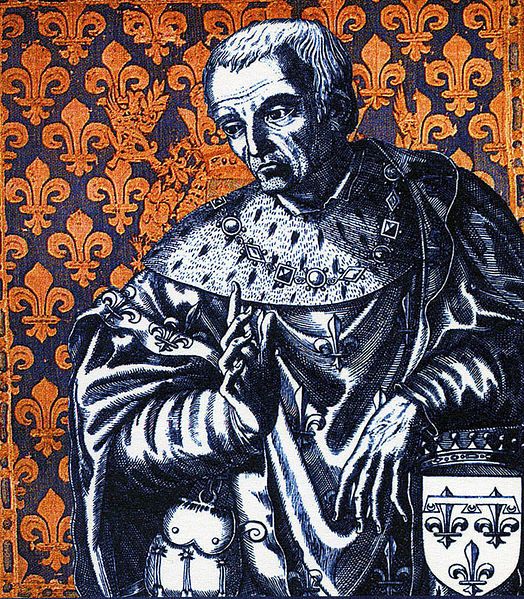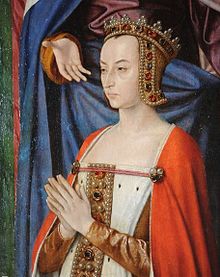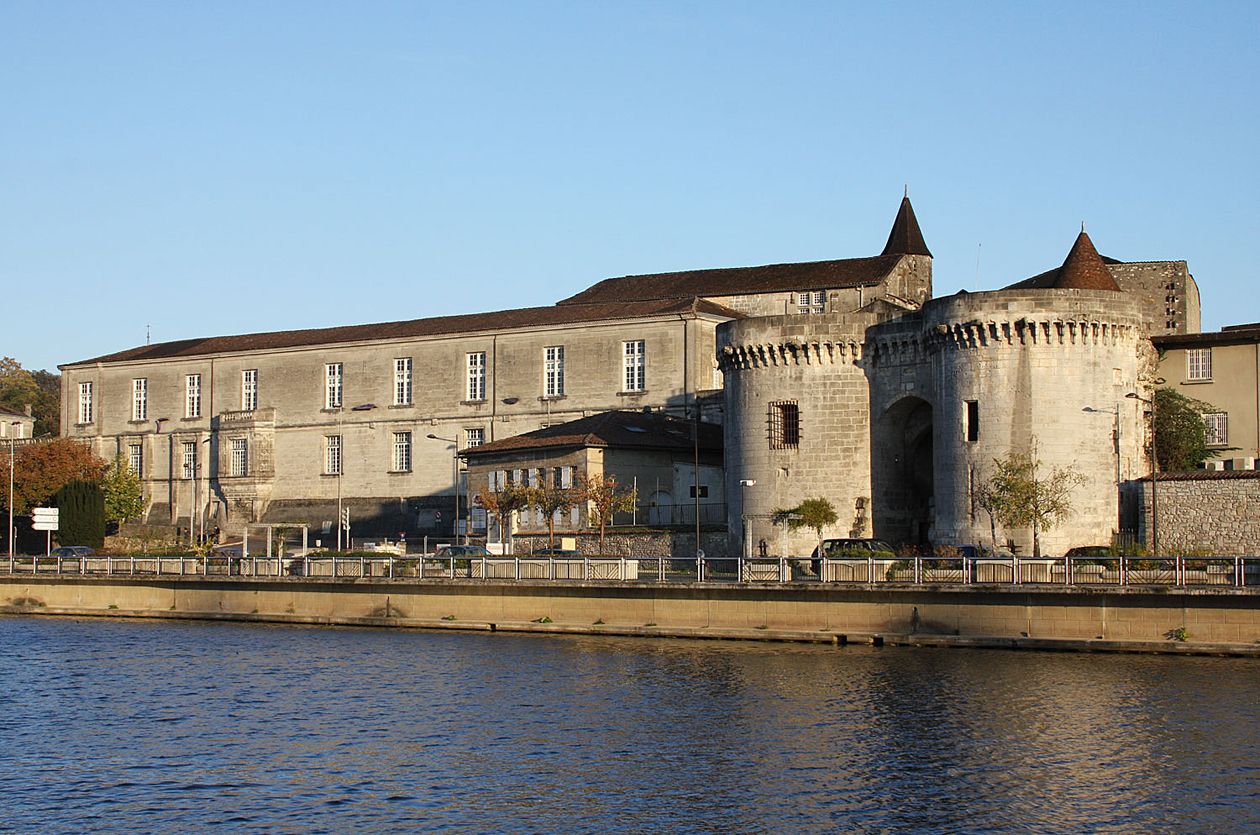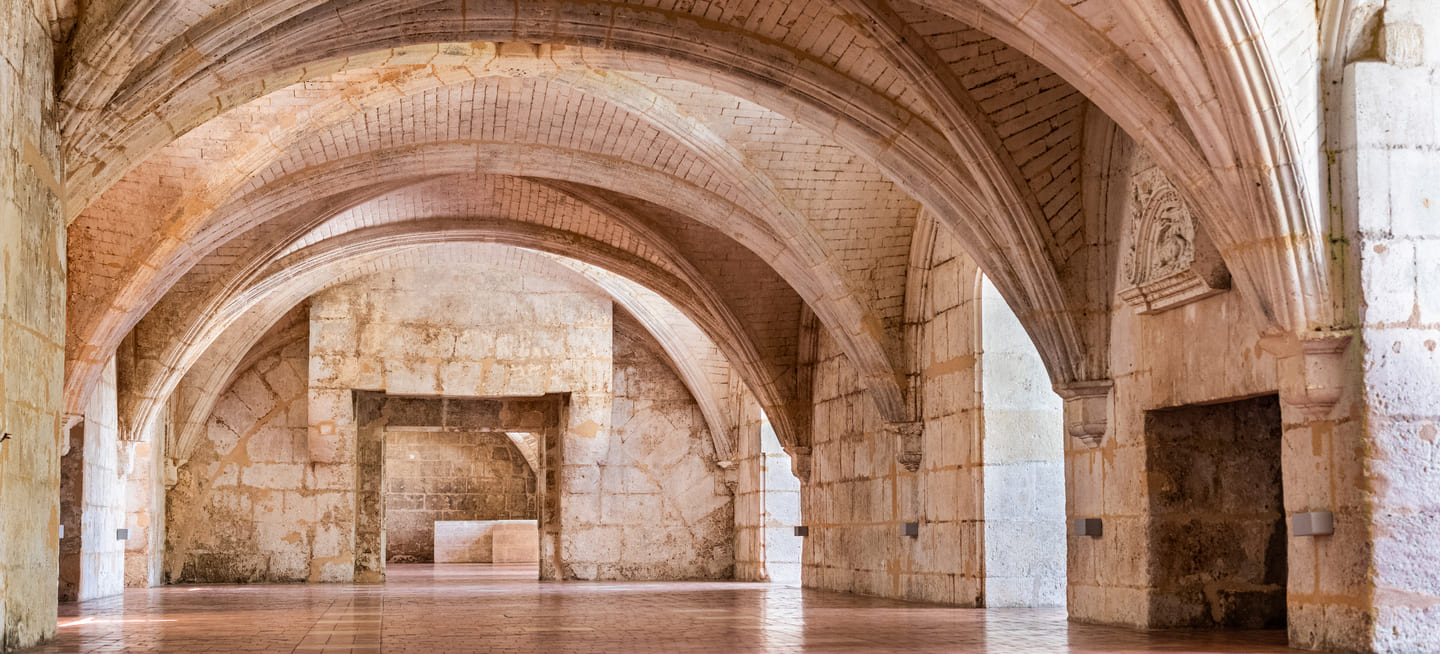Charles d’Orléans, Count d’Angoulême (born in 1459 and died on the 1st of January 1496) was a member of the French Valois-Orléans-Angoulême branch of the royal House of Valois. He was descended from Louis I, Duke d’Orléans, who was the youngest surviving son of King Charles V of France known as the Wise (le Sage) and his cousin-wife, Queen Jeanne de Bourbon.

Louis d’Orléans had been married to his first cousin, Valentina Visconti, daughter of the Italian nobleman Gian Galeazzo Visconti, at first Lord of Pavia and then the first Duke of Milan, and his first wife – Isabella de Valois, daughter of King Jean II known as the Good (le Bon, but I would call him ‘the shame of France’ – he was an extremely incompetent ruler who brought many troubles to his people). This Valois line seems to have been free from the gene of insanity that appeared in Louis’ elder brother – Charles VI of France called the Mad (le Fou).
Charles’ father, Jean d’Angoulême, had a sad fate: he had spent years in English captivity from 1412 to 1444. Upon his return, Jean had married young Marguerite de Rohan. When Jean passed away in 1467 at the age of 68, he left his 8-year-old son, Charles, and his daughter, Jeanne, as his wife’s wards. His widow, Marguerite, acted as a regent of Angoulême and Périgord (Jean’s estates) and raised her offspring. A clever, but traditional woman, Marguerite did not give her children education as stellar as Louise de Savoy would give to her two children (François I and Marguerite de Navarre). Charles d’Angoulême basked in his mother’s affection, but he was not raised as an independent and strong person. Marguerite married her daughter, Jeanne, off to her cousin in 1481 – Charles François de Coëtivy, Count de Taillebourg.
In her son’s adulthood, Marguerite tried to persuade Charles to marry, but her stubborn son kept refusing. Even after Charles began administering his affairs himself, most things were still done by his mother. Meanwhile, Charles channeled all his energy into philandering and book collecting. He had countless lovers, ranging from servant girls to married ladies, who were wives of his vassals in Angoulême. Unlike his father Jean who had a high moral code, Charles had a very amorous temperament. He had bastards with his paramours, and some of them were passed off as children of his vassals, who had to accept their overlord’s order to raise them as their own.

In 1478, Marguerite de Rohan went to the court of King Louis XI together with her young son. The monarch thought of marrying his young cousin to Marie/Mary of Burgundy, known as Mary the Rich (the only daughter of Charles the Bold, Duke of Burgundy). Mary was only 2 years older than Charles, and it seemed a good political match. After the proposal was rejected by Mary who set her eyes on Maximilian von Habsburg, King Louis had Charles betrothed to his wife’s 2-year-old niece – Louise de Savoy, who was the eldest daughter of Philippe, Count de Bresse called the Landless at the time. Because of the successive deaths of male heirs in the Savoy family, Philippe would later become Duke of Savoy, but as of 1478, Philippe and his daughter were considered too insignificant. Louis XI’s choice of such a young bride is explained by Louis’ matrimony with Queen Charlotte de Savoy, who was fond of her brother, Philippe, and wanted to secure excellent marriages for Philippe’s children.

Shocked, Charles d’Angoulême and his mother departed from the royal court after a quarrel with the monarch. They spent the next 8-9 years living in Angoulême, with Charles bedding his mistresses and his mother helping him administer his lands. If they hoped that Charles VIII, Louis XI’s successor, would change his decision about this betrothal, they were mistaken. Anne de France and her husband, Duke Pierre II de Bourbon, complied with the deceased king’s wish while they ruled as co-regents during Charles VIII’s minority. The strict Anne openly castigated the Count d’Angoulême for his lewd lifestyle when he and his mother arrived at court again due to the royal summons. Shortly afterwards, Charles joined the Orléans faction led by Louis d’Orléans (future Louis XII of France) and took part in the Mad War of 1485-88 (la Guerre folle) between Anne & Pierre de Bourbon and the rebellious lords, which was won by the royal troops. Charles assembled an army in Angoulême in 1488, but he had no time to join forces with Louis d’Orléans before he was defeated. Pierre and Anne were talented regents who subdued insurgents with a ruthlessness with which the Spider-King had crushed his enemies.
As by that time Louise de Savoy had lost her mother, she was being raised by Anne de France in her household. Anne had an affectionate attitude to her little charge, and she would not allow to dissolve the betrothal between Louise and Charles. Charles d’Angoulême was pardoned for his participation in the revolt on condition that he would marry Louise. The count wed the 12-year-old Louise on the 16th of February 1488 in the Angoulême Cathedral in the presence of Anne de France and her husband. Due to bride’s youth, the marriage was not consummated straight away, and Louise continued living with Anne until 1491. The wedding was a solemn affair for Charles who perceived it as a necessity to get a royal pardon and not to have his lands confiscated.
Charles was now married, but he did not intend to be a faithful spouse. Young Louise could not perform her marital duties at the time, while women flocked to Charles. Against his mother’s wishes, Charles did something outrageous: starting from 1489, soon after his wedding, he brought his two favorite mistresses to his Château de Cognac. They were: the noblewoman Antoinette de Polignac, Dame de Combronde, and the commoner Jeanne Le Conte. Antoinette birthed his 2 daughters – Jeanne d’Angoulême in 1490 and Madeleine d’Angoulême in 1492/93. Charles had a daughter with Jeanne Le Conte – Souveraine d’Angoulême, born in 1487. Charles practiced polygamy with these women for years, and there are records that Antoinette had miscarriages and a short-lived son Etienne. Unlike his other bastards, Charles acknowledged his illegitimate children with these paramours; it could be his act of public rebellion against Anne and Pierre, who compelled him to marry Louise. Moreover, Charles would cohabitate with these two women for the rest of his life; he appears to have been emotionally dependent upon them.

It was an unconventional arrangement for the time, especially for a prince: Charles openly lived with his lovers at Cognac who birthed his bastards, while his pious mother, Marguerite, could only grumble at her son. His mother eventually reconciled with her son’s philandering ways, and Antoinette de Polignac received a position in her household. Charles lavished Antoinette and Jeanne with gifts and purchased expensive clothes for them. He did not abstain from having affairs with other women, among them daughters of his vassals such as Jacqueline du Mas, Dame de l’Isle, whom he bedded at the age of 15, much to the displeasure of her parents who complained about this to King Charles VIII (the regency of Anne and Pierre had ended by that time). Charles VIII, who also had lovers, laughed at them, but the monarch sent a warning to his cousin to choose his bedmates more carefully. The dignified Queen Anne of Brittany was in horror.

Charles was not a military man and managed to escape the necessity to serve in the Italian campaign of Charles VIII. His sovereign had a good attitude to the Count d’Angoulême, unlike his elder sister and his queen – the two Annes. When he was not entertaining with women, Charles began spending a great deal of time in his study, working with ledgers and controlling everything in his lands, especially his treasury. In about 1490, the count found out that he had spent too much money on his paramours, so he started saving. He also invested in building several new churches in Angoulême and creating a network of new roads in the province. His aging mother, Marguerite, continued living with him, but Charles now kept her away from the management of his affairs, perhaps out of pride considering himself the head of their household.
During the reign of Charles VIII’s regents, the Count d’Angoulême was rarely at court due to his feud with Anne de France and Pierre de Bourbon. He was close with his cousin, Louis d’Orléans, and had Charles been alive when Louis ascended to the throne in 1498 as King Louis XII, he would have become a prominent courtier at his cousin and friend’s court. Anne of Brittany would anyway have been horrified by his womanizing because, to his credit, Louis XII stopped having mistresses after the annulment of his union with Jeanne de France. During Charles VIII’s reign after the monarch’s return from Italy, Charles visited his royal cousin quite often.
By all account, Charles was an easy-going and charming man with a vast range of interests. He loved hunting and could spent the whole morning chasing some deer in a forest. Yet, he was more inclined to indoor activities, including those in bed. Charles was a cultured man, one who spoke Flemish, Italian, Latin, and Spanish, yet he hated everything German and especially English; he must had developed this attitude in early childhood when his father, Jean, had been alive. While admiring the Italian Renaissance, Charles was more interested in books and book collecting than painting and sculpture. The count had an immeasurable passion for reading, just as his father had done, but he did not compose any poems, perhaps not having a talent in this.
All images are in the public domain.
Text © 2021 Olivia Longueville






I wonder who painted the (posthumous) portrait. If it’s true to life his son Francois I looked exactly like him. That NOSE!!!
King François I, one of my favorite French monarchs who created the French Renaissance and had some other accomplishments, inherited his father’s long nose and his fiery amorous temperament. Yet, in my opinion François was a far more handsome than his father. I too wonder who painted Charles’ portrait.